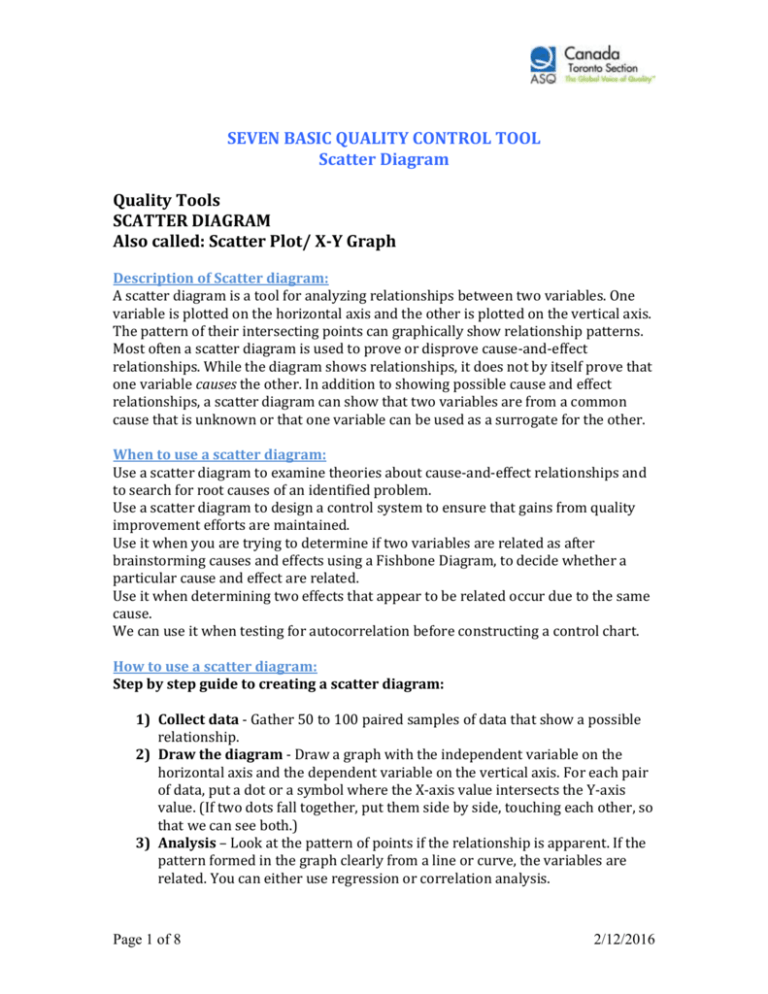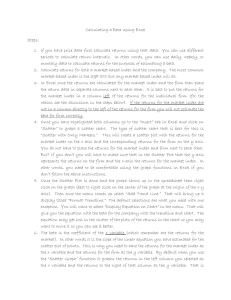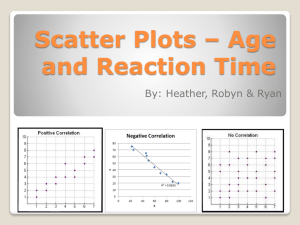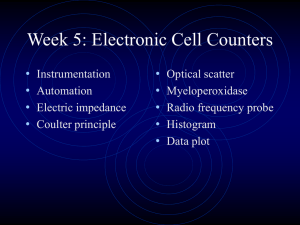here - ASQ Toronto
advertisement

SEVEN BASIC QUALITY CONTROL TOOL Scatter Diagram Quality Tools SCATTER DIAGRAM Also called: Scatter Plot/ X-Y Graph Description of Scatter diagram: A scatter diagram is a tool for analyzing relationships between two variables. One variable is plotted on the horizontal axis and the other is plotted on the vertical axis. The pattern of their intersecting points can graphically show relationship patterns. Most often a scatter diagram is used to prove or disprove cause-and-effect relationships. While the diagram shows relationships, it does not by itself prove that one variable causes the other. In addition to showing possible cause and effect relationships, a scatter diagram can show that two variables are from a common cause that is unknown or that one variable can be used as a surrogate for the other. When to use a scatter diagram: Use a scatter diagram to examine theories about cause-and-effect relationships and to search for root causes of an identified problem. Use a scatter diagram to design a control system to ensure that gains from quality improvement efforts are maintained. Use it when you are trying to determine if two variables are related as after brainstorming causes and effects using a Fishbone Diagram, to decide whether a particular cause and effect are related. Use it when determining two effects that appear to be related occur due to the same cause. We can use it when testing for autocorrelation before constructing a control chart. How to use a scatter diagram: Step by step guide to creating a scatter diagram: 1) Collect data - Gather 50 to 100 paired samples of data that show a possible relationship. 2) Draw the diagram - Draw a graph with the independent variable on the horizontal axis and the dependent variable on the vertical axis. For each pair of data, put a dot or a symbol where the X-axis value intersects the Y-axis value. (If two dots fall together, put them side by side, touching each other, so that we can see both.) 3) Analysis – Look at the pattern of points if the relationship is apparent. If the pattern formed in the graph clearly from a line or curve, the variables are related. You can either use regression or correlation analysis. Page 1 of 8 2/12/2016 4) Divide points on the graph into four quadrants. If there are N number of points on the graph, count N/2 points from top to bottom and draw a horizontal line similarly count N/2 points from left to right and draw a vertical line. If the number of points is odd, draw the lines through the middle point. 5) Count the points in each quadrant; don’t count the points on the line. 6) Add the number of points in diagonally opposite quadrants. Find the smaller sum and the total number of points in each quadrant. A= Points in Upper Left + points in Lower Right. B= Points in Upper Right + points in Lower Left. Q= The smaller of A and B. N= A + B. 7) Look for the limit for N on the Trend Test Table below. If Q is less than the limit, the two variables are related. If Q is greater than or equal to the limit, the pattern could’ve occurred due to random chance. Table 1 – Trend test table. Page 2 of 8 2/12/2016 Types of correlation: Interpret the data. Scatter diagrams will generally show one of six possible correlations between the variables: Strong Positive Correlation: The value of Y clearly increases as the value of X increases (Fig.1) Strong Negative Correlation: The value of Y clearly decreases as the value of X increases. (Fig. 2) Weak Positive Correlation: The value of Y increases slightly as the value of X increases.(Fig. 3) Weak Negative Correlation: The value of Y decreases slightly as the value of X increases.(Fig. 4) Complex Correlation: The value of Y seems to be related to the value of X, but the relationship is not easily determined. (Fig. 4) No Correlation: There is no demonstrated connection between the two variables. (Fig. 6) Scatter Diagram - graphical representation Page 3 of 8 2/12/2016 Fig. 1 Fig. 2 Fig. 3 Page 4 of 8 2/12/2016 Fig. 4 Page 5 of 8 2/12/2016 Fig. 5 Fig. 6 Tips on use of a scatter diagram: Even if the scatter diagram shows a relationship, do not assume that one variable caused the other. Both may be influenced by a third variable. When the data are plotted, the more the diagram resembles a straight line, the stronger the relationship. If a line is not clear, statistics (N and Q) determine whether there is reasonable certainty that a relationship exists. If the statistics say that no relationship exists, the pattern could have occurred by random chance. If the scatter diagram shows no relationship between the variables, consider whether the data might be stratified. If the diagram shows no relationship, consider whether the independent (x-axis) variable has been varied widely. Sometimes a relationship is not apparent because the data don’t cover a wide enough range. Think creatively about how to use scatter diagrams to discover a root cause. Drawing a scatter diagram is the first step in looking for a relationship between variables. Page 6 of 8 2/12/2016 Application of a scatter diagram: The manufacturing team suspects a relationship between product purity (percent purity) and the amount of iron (measured in parts per million or ppm). Purity and iron are plotted against each other as a scatter diagram, as shown in the figure below. There are 24 data points. Median lines are drawn so that 12 points fall on each side for both percent purity and ppm iron. To test for a relationship, they calculate: A = points in upper left + points in lower right = 9 + 9 = 18 B = points in upper right + points in lower left = 3 + 3 = 6 Q = the smaller of A and B = the smaller of 18 and 6 = 6 N = A + B = 18 + 6 = 24 Then they look up the limit for N on the trend test table. For N = 24, the limit is 6. Q is equal to the limit. Therefore, the pattern could have occurred from random chance, and no relationship is demonstrated. Fig. 7 Scatter Diagram Example Page 7 of 8 2/12/2016 References: http://web2.concordia.ca/Quality/tools/25scatter.pdf http://asq.org/learn-about-quality/cause-analysistools/overview/scatter.html Page 8 of 8 2/12/2016





